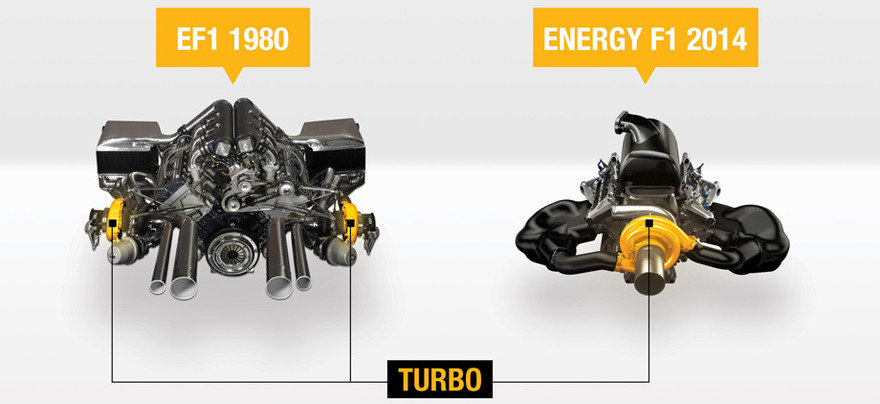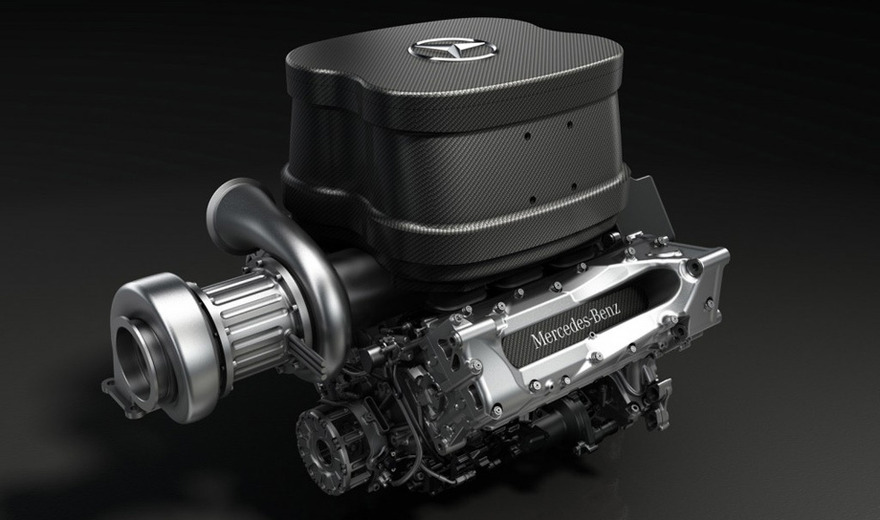Starting from 2014 the naturally-aspirated 2.4-litre V8 motors, used on F1 race cars from 2006, will be replaced by the new-generation 1.6 turbo V6 engines. According to technical regulations, only one turbo can be installed, however, the boost pressure is not yet limited. The previous powerplant was able to produce around 760 hp. The new engines will produce 600 hp but additional 160 hp will be supplied by ERS (Energy Recovery System). A few details to describe it: energy recovery systems have been used in F1 for almost 5 years already but earlier they were recovering kinetic energy only under braking and starting from 2014 F1 race cars will be equipped with double-recovery systems. Exhaust gases will be also used to recover energy. The development of Kinetic Energy Recovery Systems is closely connected to the new regulations — before 2014 it was allowed to produce additional 60 kW (81 hp) for up to 6.7 seconds per lap. The new regulations raised the limit up to 120 kW (162 hp) and this power will have longer bursts of 33 seconds per lap.
The image on the left shows a 1.5-litre twin-turbo engine for 1980 F1 cars while the image on the right shows the new 1.6-litre motor. Pay attention to the difference in size.
This video demonstrates the all-new 2014 Mercedes-Benz V6 engine











